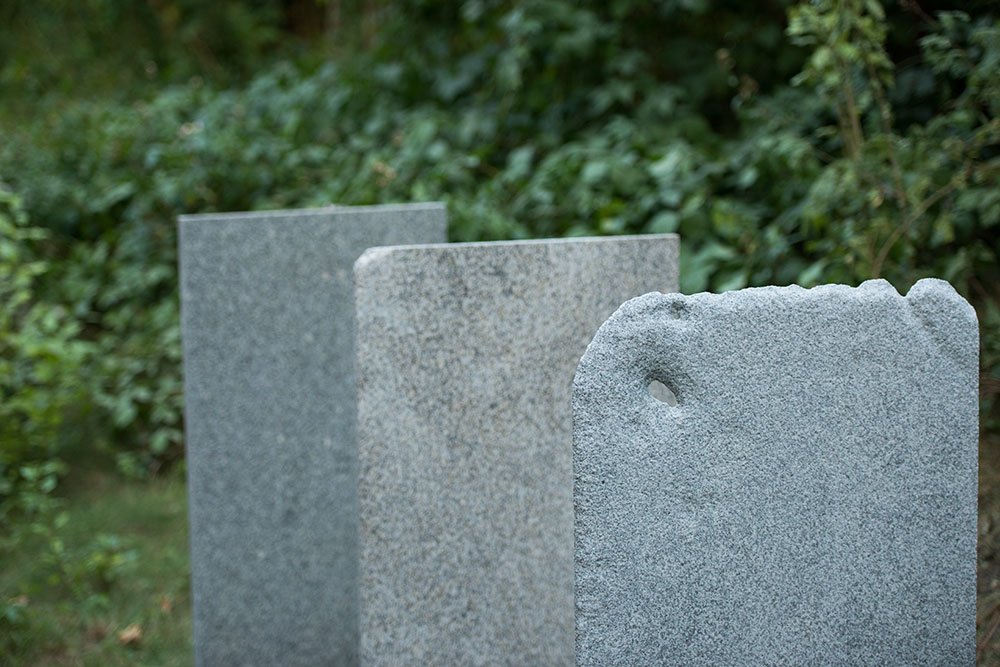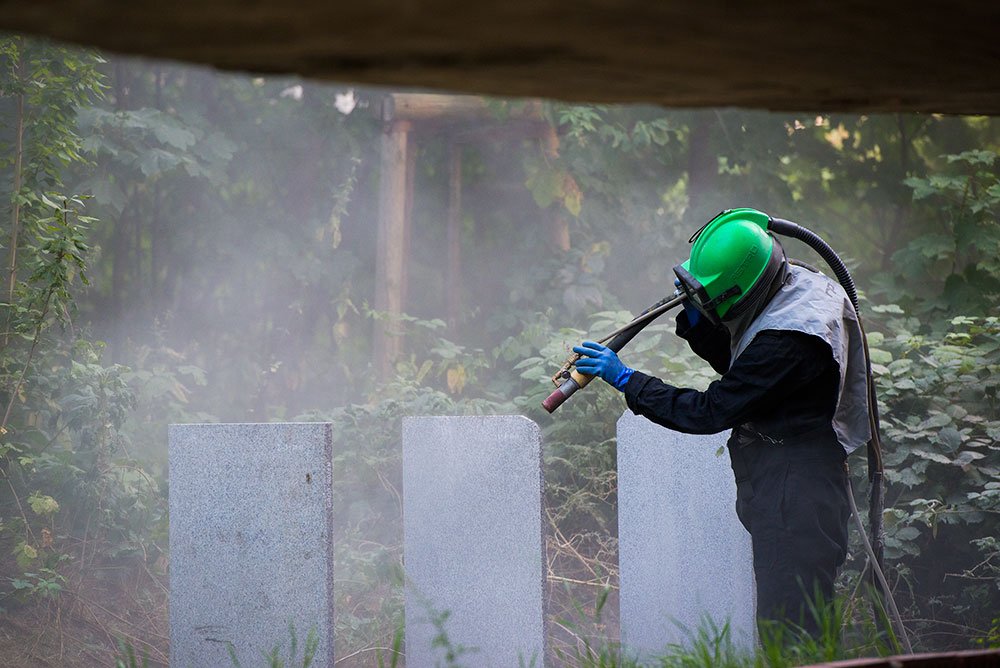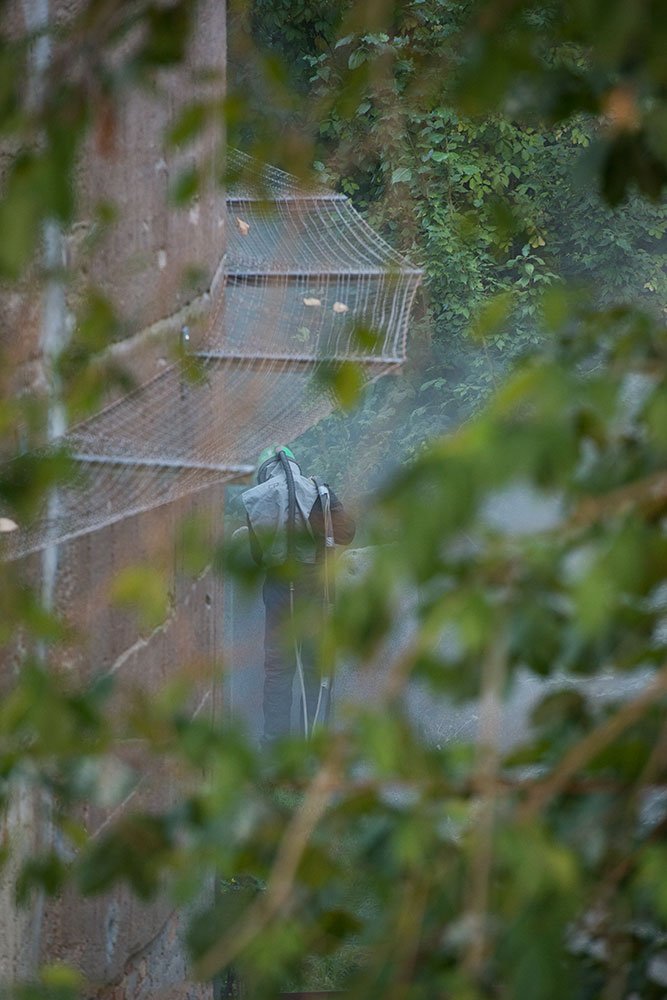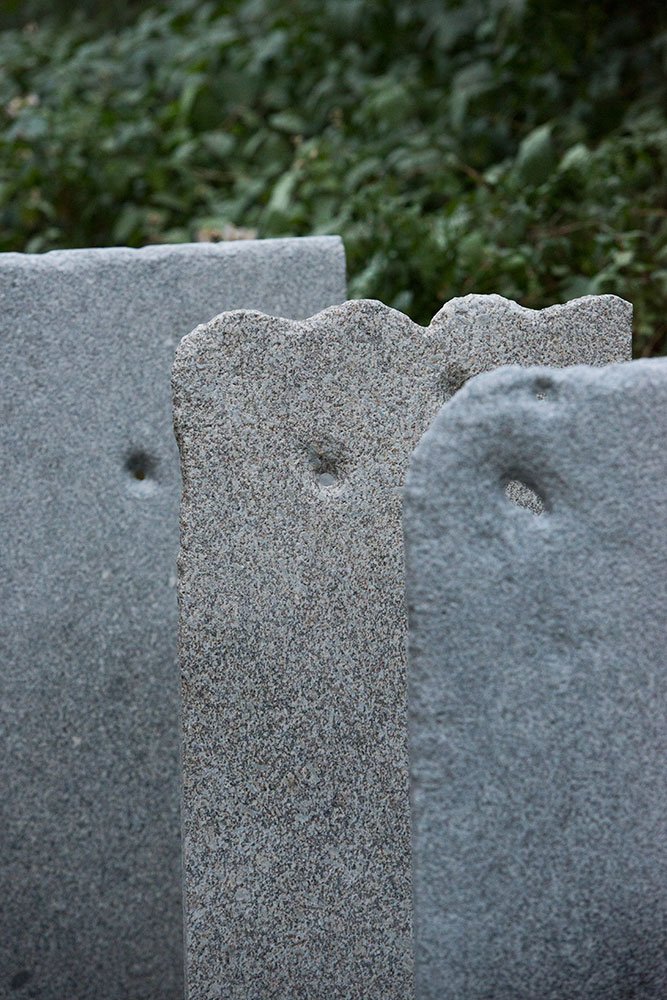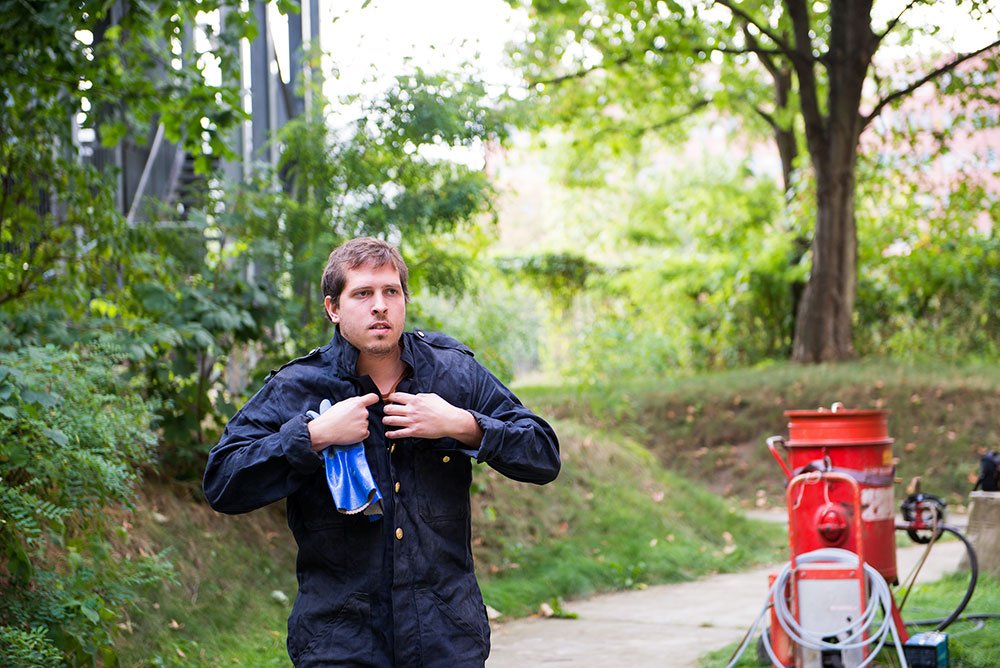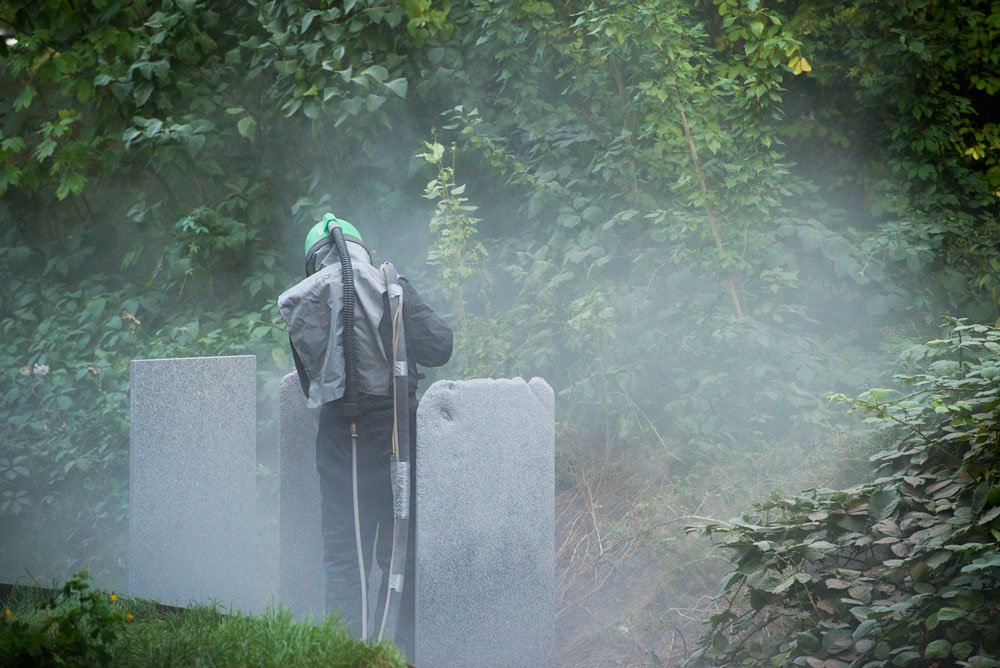
Übermenschlich: Pulver und Sand (I)
2014
Granite, Sandblasting; Set of 3 (150 cm x 60 cm x 2cm (each))
Permanent installation at Schwerbelastungskörper, Berlin
With the support of the museum Tempelhof-Schöneberg. Exhibited at Correction Lines, group exhibition, various locations, Berlin (DE) Curated by Frederiek Weda & Julia Martha Müller
The Übermenschlich project started out as a investigatory travel. The goal of this journey was the collection of four granite plates from all over Europe. The 2000 km long voyage was set out between former nazi concentration camps. They were constructed in the vicinity of stone quarries with the sole purpose of supplying granite for the planned transformation of Berlin into the Welthauptstadt (World Capital) by Hitler and his architect Albert Speer.
Together with photographer Philipp Külker, visits were made to the camps and the nearby stone quarries to document this obscure part of history and make the link to the production of granite today. With the focus on the material, an attempt was made to find the exact meaning of granite and its characteristics, and what its functions were during the nazi regime compared to now.
The destinations during the journey were: Natzweiler-Struthof (France), Flossenbürg (Germany), Mauthausen (Austria) and Groß-Rosen (Poland).
The plates were then transported to Berlin and placed next to the Schwerbelastungskörper or Heavy Load Bearing Body. This 12500 tonnes concrete cylinder was constructed in 1941 as a test object to research the supporting capacity of the Berlin soil. The monolithic object was supposed to simulate one of the four pillars of the soon to be constructed Triumph Arch, one of the many megalomaniac constructions thats were planned to reorganise the city. The Schwerbelastungskörper is nearly the only edifice that was actually built.
